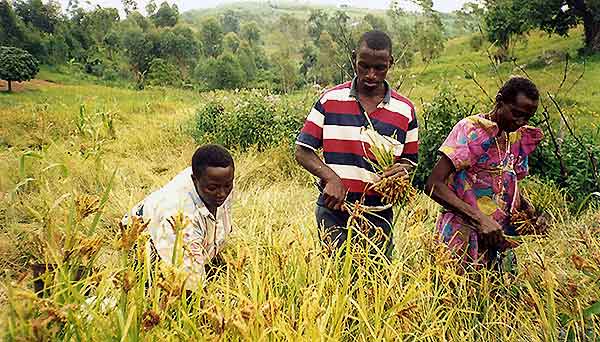Thirty-three percent of Ugandan households (3.5 million) are in the subsistence economy compared to 67 percent (7.2 million) in the non-subsistence economy.
This revelation is contained in the 2024 National Population & Housing Census released by the Uganda Bureau of Statistics (UBOS) recently.
The report reveals that among the 3.5 million households in the subsistence economy, 75 percent primarily rely on subsistence agriculture, 10 percent focus mainly on income-generating activities, and 15 percent earn wages or salaries.
UBOS defines households in the subsistence economy as those involved in subsistence farming, those receiving wages that fall short of meeting necessities, businesses generating insufficient returns, and households that are entirely inactive and unable to meet their basic requirements, often living at or below the poverty line. Conversely, households classified outside the subsistence economy belong to the non-subsistence or monetary economy. These households are characterized by their ability to adequately meet their basic needs.
Regions with the highest households in the subsistence economy According to the census report, the Karamoja sub-region accounted for the highest proportion of households in the subsistence economy, representing 71 percent.
Within this sub-region, most of these households—42 percent—are involved in subsistence farming.
The West Nile sub-region has the second largest share of households under the subsistence economy (52.8%), and most of these households are engaged in subsistence farming (41%). Acholi is the third largest region with a high number of people in the subsistence economy (50.2%). It’s followed by Bukedi and Teso, with households in the subsistence economy standing at 49.8% and 47.9%, respectively.
The report shows that 47.8% of the households in the Lango region are in the subsistence economy, while 41.4% of the households in the Elgon region are in the subsistence economy.
Regions with the lowest households in the subsistence economy
According to the report, the Buganda sub-region has the lowest share of households under the subsistence economy (15%), and most of these households are engaged in subsistence farming (10%). Other regions with the lowest households in the subsistence economy include Ankole (27.9%), Bunyoro (32.3%), Kigezi (32.8%), Tooro (34.1%), and Busoga (38.2%).
According to the report, of the 7.2 million households in the non-subsistence economy (money economy) in 2024, 76 percent are earning a wage or salary, and 14 percent have an income-generating business enterprise.
The report adds that all households in this category are living above the poverty line and, as such, can meet their basic needs.
These statistics will help President Yoweri Museveni’s government better plan for Ugandans in the money and subsistence economy. The government a few years ago introduced the Parish Development Model (PDM) to transform Ugandans in the subsistence economy out of poverty. The government disburses Shs100 million every year to every parish for this cause. This latest data will help the government know where to put more effort in a bid to transform Uganda into a modern economy.
